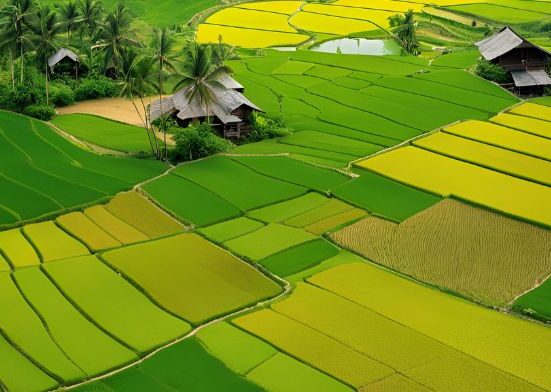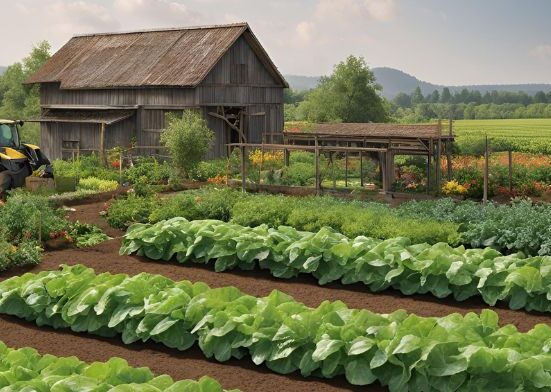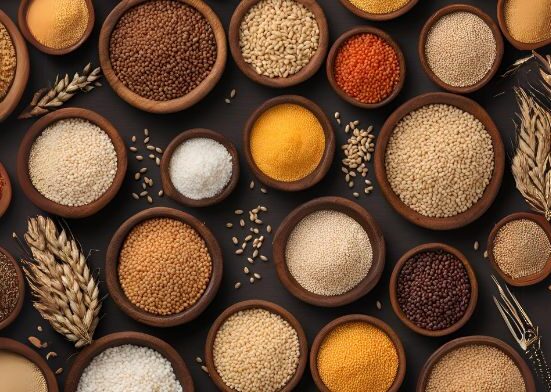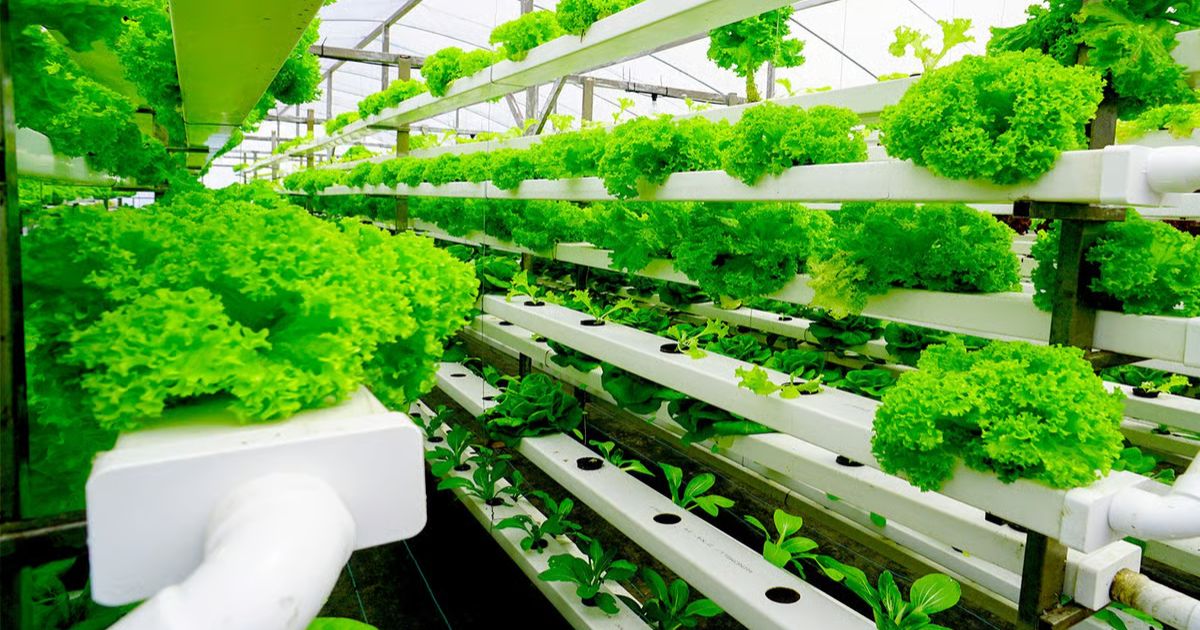As the global population steadily climbs toward 10 billion by 2050, the question of how we will feed everyone becomes more urgent than ever. Traditional farming methods, while foundational, face immense pressure from limited arable land, climate change, and resource scarcity. Urbanization, soil degradation, and water shortages compound these challenges, forcing us to rethink how and where food is produced. Enter vertical farming — a revolutionary approach to agriculture that leverages technology, space efficiency, and sustainability.
Instead of sprawling farmlands, vertical farms grow crops in stacked layers, often in controlled indoor environments. This method offers the promise of year-round production, reduced water usage, minimal pesticides, and the ability to bring fresh produce closer to urban populations.In this article, we’ll explore the world of vertical farming in depth: how it works, its history, benefits, technologies, challenges, and its potential role as the future of food.
What Is Vertical Farming?
Vertical farming is the practice of growing crops in vertically stacked layers, often integrated into urban structures like warehouses, skyscrapers, shipping containers, or purpose-built facilities. Unlike traditional farming, which relies on natural soil and sunlight, vertical farming typically uses controlled-environment agriculture (CEA) techniques.
hese involve artificial lighting, regulated temperature and humidity, and hydroponic, aeroponic, or aquaponic systems to supply plants with nutrients. In essence, vertical farming transforms farming from a land-intensive, outdoor activity into a high-tech indoor operation that maximizes space efficiency and vertical farming systems sustainability.
A Brief History of Vertical Farming
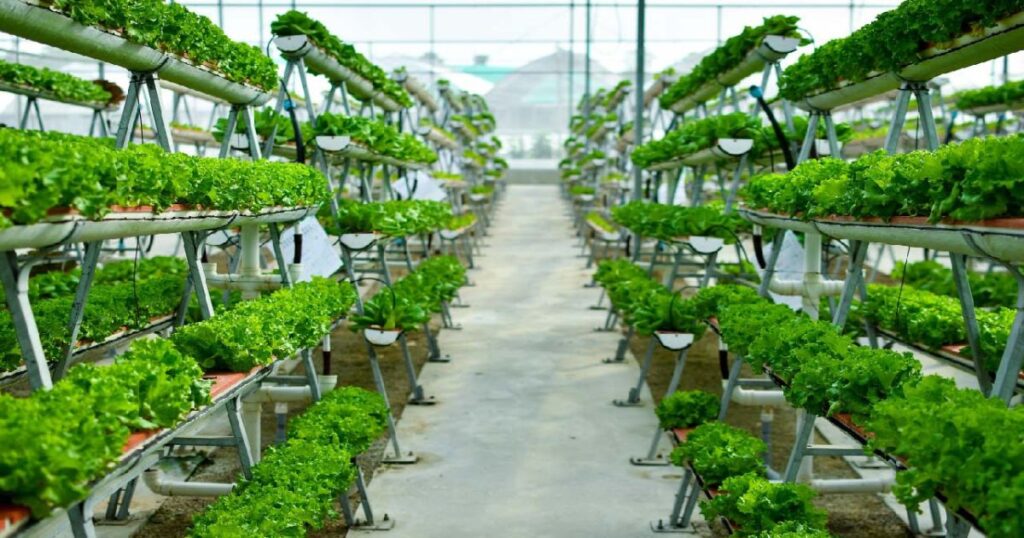
Vertical farming, though often seen as a modern innovation, has roots stretching back centuries. Early civilizations practiced stacked gardening techniques, such as the famous Hanging Gardens of Babylon, considered one of the earliest forms of vertical cultivation. In the 20th century, the concept evolved with hydroponics and controlled-environment agriculture, laying the foundation for today’s vertical farms systems.
The term vertical farming gained prominence in 1999 when Columbia University professor Dickson Despommier proposed futuristic skyscraper farms to tackle urban food shortages. Since then, advancements in LED lighting, hydroponics, and automation have transformed vertical farming into a practical solution for growing food in limited spaces. Today, it represents a sustainable response to population growth, urbanization, and the global demand for fresh produce.
How Vertical Farming Works
Vertical farming is an innovative agricultural method that grows crops in stacked layers, often inside climate-controlled buildings or greenhouses. Instead of relying on traditional soil-based farming, it uses techniques like hydroponics, aeroponics, or aquaponics, where plants receive nutrients through water solutions, mist, or integrated fish systems. LED lighting replaces natural sunlight, ensuring plants get the right spectrum for photosynthesis vertical cultivation year-round.
Controlled environments regulate temperature, humidity, and CO₂ levels, creating ideal conditions for rapid plant growth while conserving space and resources. This system significantly reduces water usage, eliminates the need for harmful pesticides, and allows farming in urban areas. By maximizing vertical space, it ensures high yields and fresh produce close to consumers, supporting sustainable and efficient food vertical farming at home production.
Lighting Systems
Lighting systems are essential for creating functional, safe, and visually appealing environments in homes, workplaces, and public spaces. They include various solutions such as ambient, task, and accent lighting, designed to enhance visibility and atmosphere. Modern lighting systems often incorporate energy-efficient technologies like LED, smart controls, and automated sensors, reducing electricity costs and environmental impact.
In architectural and interior design, lighting plays a key role in highlighting features, setting moods, and improving productivity. Outdoor and industrial lighting systems ensure security, visibility, and efficiency..
Nutrient Delivery
Nutrient Delivery refers to the process of supplying essential nutrients—such as nitrogen, phosphorus, potassium, and trace minerals—to plants, animals, or humans efficiently and effectively. In agriculture and horticulture, this involves methods like soil fertilization, hydroponics, foliar feeding, and drip irrigation to ensure optimal growth and yield. In biology and medicine, nutrient delivery relates to how the body absorbs and transports nutrients to cells for energy, repair, and maintenance. Effective nutrient delivery boosts health, productivity, and sustainability in ecosystems and living how does vertical farming work organisms.
Climate Control
Climate control refers to systems and technologies designed to regulate and maintain optimal environmental conditions, including temperature, humidity, and air quality. Commonly used in homes, vehicles, workplaces, greenhouses, and agricultural facilities, climate control ensures comfort, efficiency, and productivity. In agriculture and indoor farming, climate control plays a crucial role in supporting plant growth by creating ideal conditions year-round. Modern climate control systems often integrate sensors, automated adjustments, and smart technology to provide precise, energy-efficient environmental management tailored to specific needs and vertical agriculture system conditions.
Automation and Robotics
Automation handles seeding, irrigation, nutrient dosing, and harvesting. Robotics minimizes labor costs and reduces human error.Crops are cultivated on shelves, racks, or towers, enabling farmers to grow many times more food per square foot compared to traditional what is vertical farming fields.
Advantages of Vertical Farming
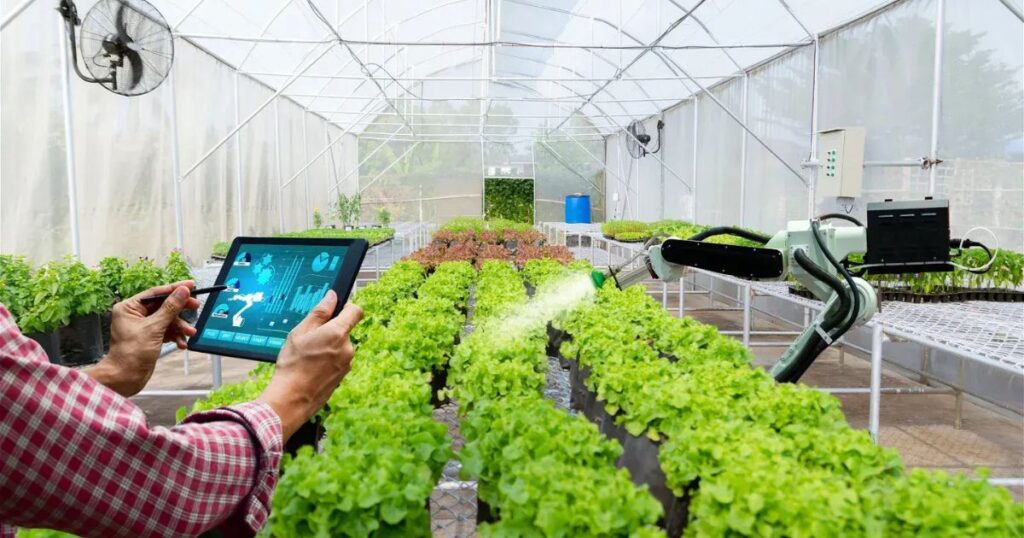
Vertical farming offers a sustainable and innovative approach to food production by growing crops in stacked layers within controlled environments. One of its key advantages is maximizing limited space, making it ideal for urban areas where land is scarce. It significantly reduces water usage—up to 90% less than traditional farming—through efficient hydroponic or aeroponic systems. Since crops grow indoors, they are protected from pests, diseases, and unpredictable weather, reducing the need for harmful plenty vertical farming pesticides.
Vertical farming also ensures year-round crop production, resulting in consistent yields and fresher produce closer to consumers. Additionally, it minimizes transportation costs and carbon emissions while promoting food security. This method combines technology, sustainability, and efficiency to meet the demands of a growing population.
Space Efficiency
Space efficiency refers to the optimal use of available space to maximize functionality and productivity while minimizing waste. It involves smart planning, design, and organization to ensure every inch serves a purpose. In various contexts—such as architecture, urban planning, interior design, or agriculture—space efficiency improves usability, reduces costs, and enhances comfort. Techniques like vertical storage, compact layouts, multifunctional furniture, or precision farming all demonstrate space efficiency.
Ultimately, it’s about achieving more with less, creating sustainable and practical environments. Indoor controlled environments allow crops to grow in any season, independent of weather or climate. This ensures a consistent food supply.
Water Conservation
Water conservation is the mindful use and protection of water resources to ensure their sustainability for future generations. It involves practices like reducing wastage, fixing leaks, using efficient irrigation, and recycling water. Conserving water helps preserve ecosystems, supports agriculture, reduces energy use, and lowers utility costs. With growing populations and climate change putting pressure on water supplies, adopting conservation measures is essential. Simple actions, such as turning off taps, collecting rainwater, and using drought-resistant plants, can make a significant impact in safeguarding this vital resource..
Reduced Transportation Needs
Reduced transportation needs refer to minimizing the distance and frequency goods, services, or resources must travel. This approach lowers fuel consumption, reduces greenhouse gas emissions, and decreases transportation costs. It is often achieved through local sourcing, urban planning, and efficient logistics. Benefits include improved environmental sustainability, faster delivery times, and lower expenses for businesses and consumers. In agriculture, manufacturing, and supply chains, reduced transportation needs also enhance freshness, quality, and overall efficiency, making it a vital strategy for sustainable development and cost-effective operations.
Minimal Pesticides
Minimal pesticides refer to the careful and limited use of chemical or natural substances to control pests, ensuring the least possible impact on the environment, human health, and beneficial organisms. This approach prioritizes eco-friendly farming practices, such as integrated pest management (IPM), crop rotation, and biological controls. By reducing pesticide use, farmers promote healthier soil, cleaner produce, and sustainable agriculture. Minimal pesticide practices support biodiversity, protect pollinators, and contribute to long-term food safety while maintaining effective pest control with minimal chemical intervention.
Climate Resilience
Vertical farming isn’t vulnerable to droughts, floods, or unpredictable weather, making it more reliable in the face of climate change.
Limitations and Challenges
Limitations and Challenges highlight the barriers, constraints, and difficulties that can hinder progress, performance, or outcomes in any field. They often arise from resource shortages, technical restrictions, environmental factors, or human limitations. Challenges test resilience, requiring creative problem-solving and adaptability, while limitations define the boundaries within which solutions must operate. Understanding both is crucial for realistic goal-setting, risk management, and effective planning.
Whether in business, education, agriculture, or technology, identifying limitations and challenges helps organizations and individuals anticipate setbacks, design strategies, and innovate within constraints. Acknowledging these factors not only prevents failure but also fosters growth, resilience, and improvement by turning obstacles into opportunities for learning and long-term development.
Types of Crops Grown in Vertical Farms
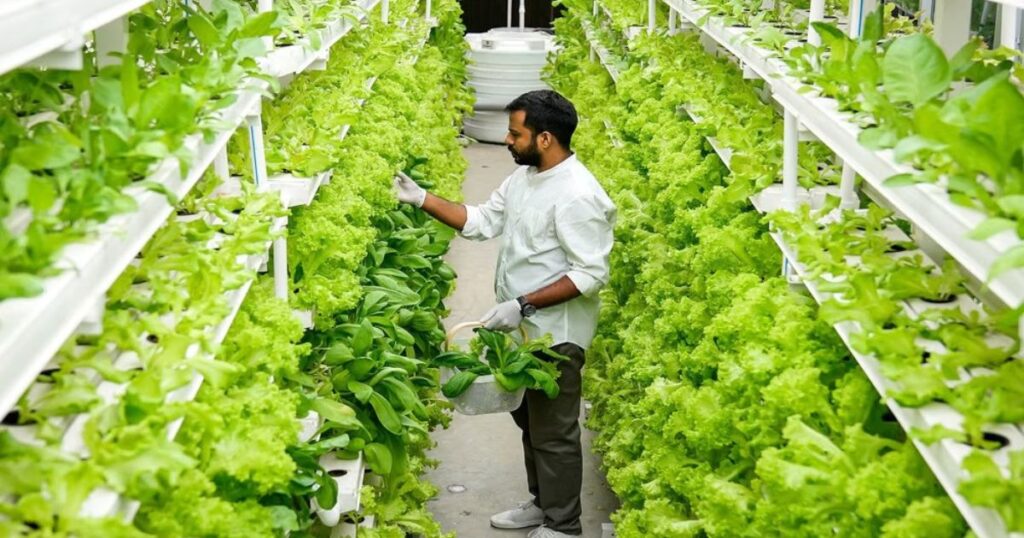 Vertical farms are designed to optimize space, resources, and efficiency, making them ideal for cultivating a variety of crops year-round. Leafy greens such as lettuce, spinach, kale, and arugula are among the most common because of their fast growth and high demand. Herbs like basil, mint, cilantro, and parsley also thrive in controlled environments, offering fresh flavors for culinary use. Microgreens, prized for their nutrition and quick harvest cycle, are another popular choice.
Vertical farms are designed to optimize space, resources, and efficiency, making them ideal for cultivating a variety of crops year-round. Leafy greens such as lettuce, spinach, kale, and arugula are among the most common because of their fast growth and high demand. Herbs like basil, mint, cilantro, and parsley also thrive in controlled environments, offering fresh flavors for culinary use. Microgreens, prized for their nutrition and quick harvest cycle, are another popular choice.
Strawberries and other small fruits can be grown using advanced hydroponic or aeroponic systems. Additionally, some farms experiment with tomatoes, peppers, and cucumbers. By focusing on high-value, quick-growing crops, vertical farming ensures a sustainable, fresh, and consistent food supply.
Vertical Farming Technologies Shaping the Future
- LED Innovations – Next-gen LEDs mimic natural sunlight while consuming less energy.
- AI and IoT – Data-driven farming uses sensors and AI to optimize growth, predict harvest times, and reduce resource waste.
- Blockchain Traceability – Ensures transparency from farm to consumer, increasing trust in vertically farmed products.
- Robotics and Drones – Automating planting, monitoring, and harvesting reduces labor costs.
- Renewable Energy Integration – Solar panels, wind energy, and biogas systems aim to offset energy demands.
Global Examples of Vertical Farming
- AeroFarms (USA) – One of the largest vertical farms, using aeroponics to grow greens in Newark, New Jersey.
- Plenty (USA) – Backed by investors like SoftBank, focused on expanding large-scale indoor farms.
- Spread (Japan) – Specializes in robotic vertical farming, producing lettuce at scale.
- Sky Greens (Singapore) – Pioneered rotating vertical towers powered by water-driven mechanisms.
- InFarm (Germany) – Installs modular vertical farms inside supermarkets for hyper-local food production.
Vertical Farming vs. Traditional Farming
Vertical farming and traditional farming represent two contrasting approaches to food production. Traditional farming relies on open fields, soil, and seasonal cycles, often requiring large amounts of land, water, and favorable weather. While it supports diverse crops and livestock, it is vulnerable to climate change, pests, and resource depletion. Vertical farming, on the other hand, uses stacked layers in controlled indoor environments, optimizing light, temperature, and water through advanced technologies like hydroponics and aeroponics.
This method reduces land use, minimizes water waste, and allows year-round harvests, even in urban spaces. However, it requires high energy and setup costs. Both systems play vital roles—traditional farming in large-scale food supply, and vertical farming in sustainable, future-focused agriculture.
Vertical Farming and Sustainability
Sustainability lies at the heart of vertical farming’s appeal:
- Reduced carbon footprint through localized production.
- Less food waste due to precise harvesting and shorter supply chains.
- Biodiversity preservation by reducing deforestation and agricultural sprawl.
- Cleaner food systems with reduced pesticides and chemicals.
If powered by renewable energy, vertical farming could become a cornerstone of sustainable food production.
Future of Vertical Farming
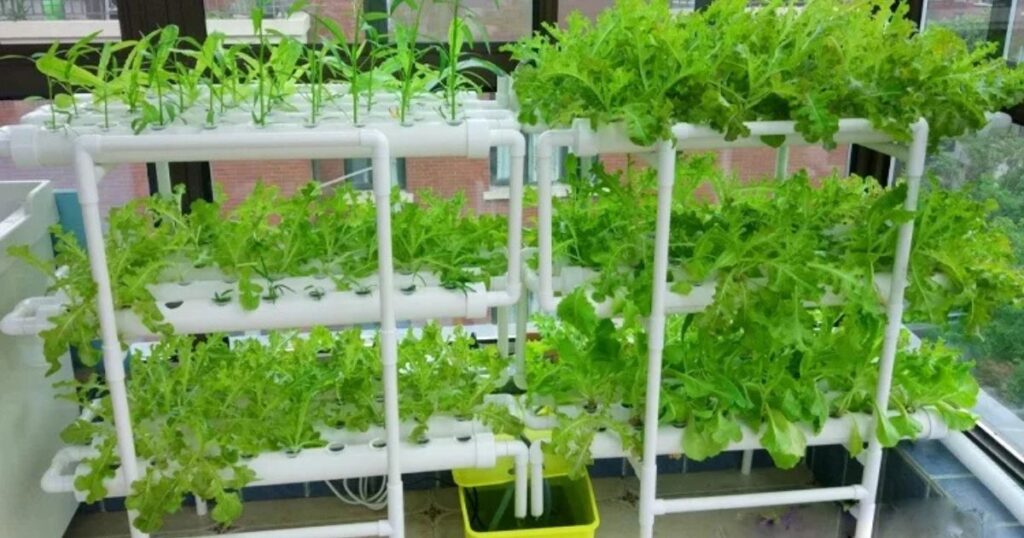 The future of vertical farming is set to revolutionize global food production by combining technology, sustainability, and innovation. As urban populations grow and arable land decreases, vertical farming offers a practical solution by producing fresh crops in stacked layers within controlled environments. This method uses advanced hydroponics, aeroponics, and LED lighting to maximize yield while reducing water and land use. With the integration of artificial intelligence, robotics, and renewable energy, vertical farms can operate efficiently year-round, delivering pesticide-free, nutrient-rich food close to consumers.
The future of vertical farming is set to revolutionize global food production by combining technology, sustainability, and innovation. As urban populations grow and arable land decreases, vertical farming offers a practical solution by producing fresh crops in stacked layers within controlled environments. This method uses advanced hydroponics, aeroponics, and LED lighting to maximize yield while reducing water and land use. With the integration of artificial intelligence, robotics, and renewable energy, vertical farms can operate efficiently year-round, delivering pesticide-free, nutrient-rich food close to consumers.
Beyond improving food security, it also reduces transportation costs and carbon emissions. The future of vertical farming lies in scaling globally, making agriculture more resilient, sustainable, and adaptable to climate change challenges.
Conclusion:
Vertical farming is more than a futuristic concept — it is a practical, evolving solution to one of humanity’s greatest challenges: feeding a growing population sustainably. By stacking crops in controlled environments, conserving resources, and localizing food production, vertical farming addresses the limitations of traditional agriculture while offering hope for a greener, healthier future.
Though challenges remain — particularly energy use and high costs — ongoing innovations in AI, renewable energy, and automation are paving the way for broader adoption. As cities expand and the climate changes, vertical farming may become not just an alternative but a necessary cornerstone of global food systems.
FAQ:
What is Vertical Farming?
Vertical farming is a method of growing crops in vertically stacked layers, often in controlled indoor environments such as skyscrapers, warehouses, or shipping containers. It uses technologies like hydroponics, aeroponics, and aquaponics to maximize crop yield in limited space.
How does Vertical Farming Work?
Vertical farms use artificial lighting, climate control, and nutrient-rich solutions to grow plants without soil. Layers of crops are arranged vertically to save space, and automation systems often monitor water, nutrients, and temperature for optimal growth.
What Crops are best for Vertical Farming?
Leafy greens (lettuce, spinach, kale), herbs (basil, mint, cilantro), microgreens, strawberries, and some dwarf fruiting plants are ideal due to their short growth cycles and compact sizes.
Is Vertical Farming Sustainable?
Yes, in many cases. Vertical farming can dramatically reduce water usage and land requirements while producing fresh food year-round. However, its sustainability depends on energy sources—using renewable energy significantly improves environmental benefits.
How Much Does Vertical Farming Cost?
Costs vary widely based on scale, technology, and location. Small-scale setups can cost a few thousand dollars, while commercial-scale farms may require millions in investment.



